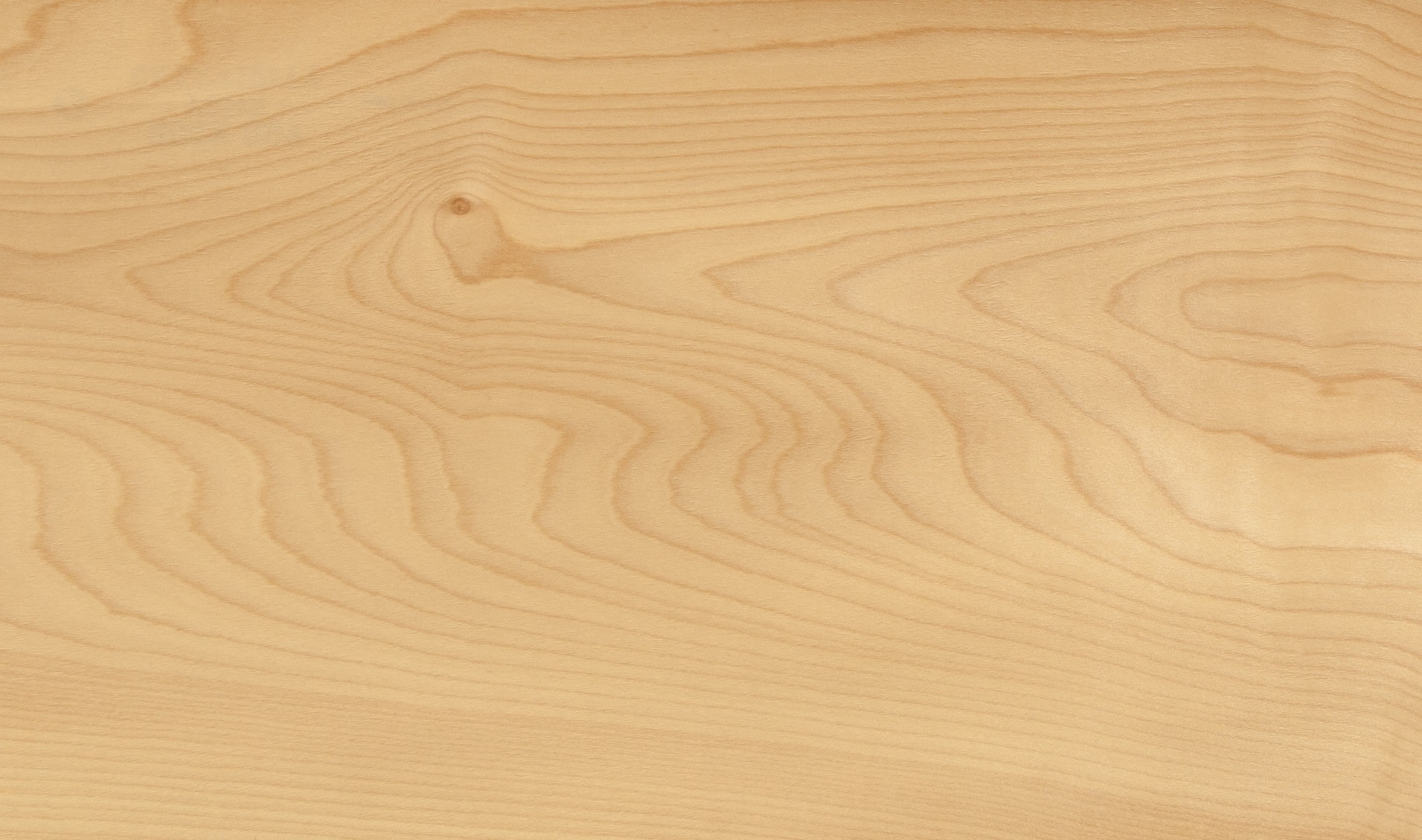
It is a deciduous hardwood. Other common names are hard maple and rock maple. Average height: 60 lt. to 75 ft. Average trunk diameter: 1 ft. to 3 ft. The 1992 National Register of Big Trees identifies the largest sugar maple: it is found in Norwich, Connecticut and is 93 ft. tall with an 80 ft. canopy spread and a trunk circumference of 269 inches. Big, handsome, leafy trees, sugar maples grow throughout New England, the Appalachians, and the Northern Midwestern and Great Lakes States. A beloved American specie, many states claim the sugar maple for their official tree, among them Wisconsin, West Virginia, New York and of course, Vermont.
In the lumber industry sugar maple is referred to as hard maple, with a good reason. The very hard wood is heavy, strong, stiff and shock resistant. It works beautifully with both machine and hand tools. The sapwood is cream color tinged with pale brown. The heartwood is a deeper reddish brown with dark mineral streaks. The most distinctive surface feature of sugar maple, however, is the rare, highly figured grain patterns found in more variety than in any other domestic hardwood. They include: wavy, curly, quilted, blistered, fiddleback, leaf figure, maple burl and of course, the famous bird`s eye. Although often stained to bring out these unusual patterns, maple wood is never painted. Its color and grain is too beautiful to ever be covered.
From earliest Colonial times sugar maple has been prized equally for its warm beauty and its durability - its unusual resistance to abrasion and indentation. It was a first choice for furniture building and all interior finish application such as flooring, paneling and cabinetry. In manufacturing it has been, and still is, used for woodenware, bakery paddles, bowling pins, gun stocks, piano parts, spools, lasts and handles. Figured maple wood and veneer has been, and still is used for decorative purposes such as fine furniture inlays, violin backs and picture framing.
Although the sugar maple tree is highly identified with New England due to its brilliant autumn color leaf display and its maple syrup production, maple lumber production comes principally from the mature upland forests of the Middle Atlantic and Lakes States. It is still one of America`s most valuable hardwoods and remains popular in today`s marketplace. Maple still has a close association with the manufacture of Early American style furniture. Its use in millwork production is important. It is a top flooring choice for heavily trafficked areas such as dance floors, bowling alleys and throughout the home in kitchens, halls and stairways, especially. It is used for kitchen cabinetry and fixtures, cutting surfaces and school furniture. It serves many purposes in industry and in the manufacture of durable wooden items and tools. Straight grained maple is readily available in an average price range. Figured maple wood and veneer is more rare and thus more valuable, selling in a high price range.
